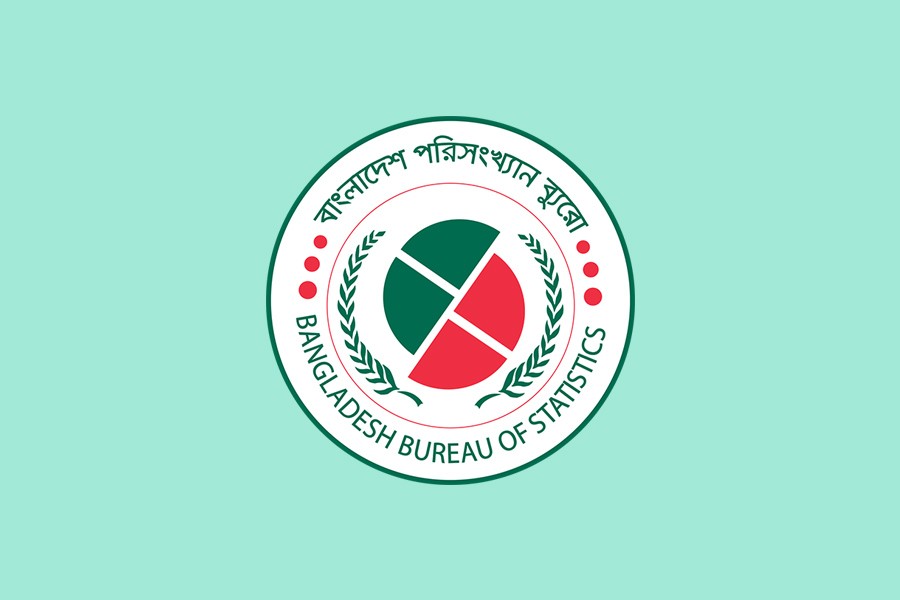The country’s poverty rate came down at 21.8 per cent in 2018, according to the latest data of the Bangladesh Bureau of Statistics (BBS).
Meanwhile the poverty rate, as per the lower poverty line or people living in extreme poverty, came down at 11.3 per cent in last year.
The findings were revealed at a press conference at the BBS Bhaban on Monday. The press conference was arranged to reveal the final data of the Household Income and Expenditure Survey (HIES)-2016, reports BSS.
BBS Director General Dr Krishna Gain revealed the final results of the survey while HIES Project Director Dr Dipankar Roy was also present.
“According to the growth elasticity model, the poverty rate as per upper poverty line was 21.8 per cent while the poverty rate as per lower poverty line was 11.3 per cent in 2018,” said Dr Dipankar.
He also hoped that Bangladesh would be able to attain the related SDG target by 2030 through eradicating poverty.
The HIES 2016 findings showed that the country’s poverty rate as per the upper poverty line came down at 24.3 per cent in 2016 which was 40 per cent in 2005. In the same time, the poverty rate in 2016 as per the lower poverty line or people living in extreme poverty came down at 12.9 per cent which was 25.1 per cent in 2005.
Dr Krishna Gain said there is no difference between the preliminary data and final data of the HIES 2016 while the printed publication of the HIES 2016 would be available within this month.
The preliminary data of the HIES 2016 was first published in October 2017 marking the 25th International Day for Poverty Reduction, she added.
According to the previous HIES 2010, the poverty rate at national level in the country was 31.5 per cent with high poverty rate at the rural level having 35.2 per cent while 21.3 per cent at the urban level.
The HIES 2016 also showed that the extreme poverty rate came down to 12.9 per cent at national level with highest 14.9 per cent at the rural level while the lowest 7.6 per cent at the urban level.
As per the HIES 2010, the extreme poverty rate was 17.6 per cent at the national level with the highest 21.1 per cent at the rural level and the lowest 7.7 per cent at the urban level.
The HIES 2016 was completed in a very large sample of 2,304 primary sampling units (PSUs) comprising 46,076 households. Thus, HIES 2016 covered nearly four times higher sample than 2010.
The field operation was done during April 2016 through March, 2017. The first HIES Survey in the country was conducted during the fiscal year 1973-74.
Among the key HIES 2016 Survey findings, it was found that the monthly income of the households increased to Taka 15,988 in 2016 from Taka 11,479 in 2010. Similarly, monthly household expenditure increased to Taka 15,715 in 2016 from Taka 11,200 in 2010. There exists variation in income between rural and urban areas of the country.
The standard of living of households improved in 2016 compared to 2010.
The wall materials of households with durable materials increased, brick/cement wall increased from 25.12 per cent in 2010 to 30.50 per cent in 2016.
Substantial increase in access to electricity is observed in 2016. It increased from 55.26 per cent in 2010 to 75.92 per cent in 2016. The use of mobile phone increased from 63.7 per cent in 2010 to 92.5 per cent in 2016.
The literacy rate increased from 57.9 per cent in 2010 to 65.6 per cent in 2016. Female literacy rate increased from 54.8 per cent in 2010 to 63.4 per cent in 2016.
The access to social safety net which contributes in poverty reduction increased substantially during the 2010-2016. The households and programme beneficiaries under different social safety net programmes were 24.6 per cent in HIES 2010, whereas it increased to 27.8 per cent at the household level and 28.7 per cent at the individual level in HIES 2016.
In case of school enrolment aged 6-10 years, the enrolment rate among the poor increased to 90.2 per cent in 2016 which was 78.33 per cent in 2010. The enrolment rate among the non-poor also increased to 95 per cent in 2016 which was 89 per cent in 2010.
Besides, the per capita per day food intake of pulses, vegetables, fish, meat, egg, increased in 2016 compared to 2010 period.


